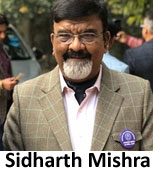Narratives do matter in polls. They increasingly started to influence voting patterns ever since the Aam Aadmi Party (AAP) unveiled the power of social media during the 2013 Delhi Assembly polls, emerging as a political force from almost nowhere. Prime Minister Narendra Modi quickly picked the threads and patented it during the 2014 campaign.
The spin masters and media strategists were never as important they are today in any poll campaign. Though the best-known political spin master Prashant Kishor is conspicuous by his absence from campaign in his home state, the spin of words is complementing the pace and gruel of campaign at grassroots.
On Monday Bihar’s Deputy Chief Minister Sushil Kumar Modi took to twitter to say that the rival RJD’s Chief Ministerial face Tejashwi Yadav has humiliated the upper caste at a rally in the remote Rohtas area. Bihar BJP’s tallest leader Sushil Kumar Modi, is a known baiter of the upper castes and often targeted by leaders of his party for step-motherly treatment to communities loyal to the BJP.
Posting of such information by Sushil Modi somewhere betrays the jitter in the BJP campaign, which suspects that a section of upper caste voters could vote for the grand alliance (Mahagathbandhan) of the RJD, Congress and the Left parties. The magnitude of edginess is such that Sushil Modi has also claimed that his rivals used black magic a few years back against him.




